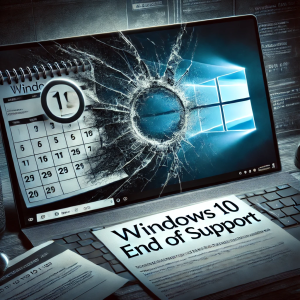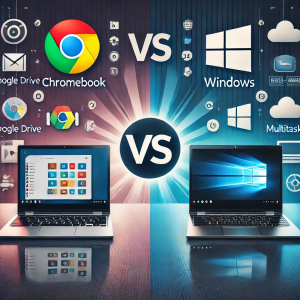Once the king of internet calling and video conferencing, Skype is now gradually being retired by Microsoft. While Microsoft has not officially shut down Skype completely, the platform’s development and visibility have been significantly scaled back in favor of its newer, more modern communication platform — Microsoft Teams.
So, why is Microsoft pushing Skype into the background after years of dominance in the VoIP space? In this article, we’ll explore the real reasons behind Skype’s decline, how Microsoft is shifting its focus, and what it means for users around the world.
🔹 A Quick History of Skype
Skype launched in 2003 and quickly gained global popularity for its free voice and video calls, instant messaging, and international call capabilities. It was acquired by Microsoft in 2011 for $8.5 billion and integrated into Microsoft’s product ecosystem, including Office and Windows.
However, over the years, Skype struggled to keep up with changing technology trends, user expectations, and new competitors in the communication space.
🔹 Is Microsoft Really Shutting Down Skype?
Yes — Microsoft has officially announced that Skype will be shutting down on May 5, 2025. After this date, the platform will no longer be available for downloads, updates, or support. While Skype has remained operational in recent years, Microsoft is now formally retiring the service to fully shift its focus toward Microsoft Teams as the primary communication and collaboration platform. This move marks the end of an era for Skype and encourages all users to transition to modern alternatives well before the shutdown date.
🔹 Why Is Microsoft Phasing Out Skype?
Here are the key reasons:
✅ 1. Microsoft Teams Is More Versatile and Scalable
Microsoft Teams has quickly become the preferred platform for both professional and personal communication. Unlike Skype, Teams offers:
-
Advanced collaboration tools (chat, file sharing, screen sharing, and app integration)
-
Deep integration with Microsoft 365 apps (Word, Excel, Outlook)
-
Support for large-scale meetings and webinars
-
Better security and compliance for enterprise use
Teams is more aligned with modern workplace needs, especially in a post-pandemic world where remote work and hybrid setups are the norm.
✅ 2. Skype Failed to Keep Up with Competitors
Skype was once ahead of its time, but in recent years it’s been outpaced by platforms like Zoom, Google Meet, WhatsApp, and FaceTime. These services offered:
-
Faster, more stable video connections
-
Sleeker user interfaces
-
Cross-platform reliability
-
Simpler user experiences, especially on mobile devices
In contrast, Skype suffered from performance issues, a clunky interface, and inconsistent user experiences.
✅ 3. Brand Confusion and Strategy Shift
Having both Skype and Teams under the Microsoft umbrella created confusion. Teams was marketed heavily as the future of communication, while Skype was still lingering without clear direction.
To simplify branding and resources, Microsoft shifted its focus to Teams as the unified platform for chat, video, calling, and collaboration. Even Windows 11 comes pre-installed with Teams instead of Skype.
✅ 4. Enterprise Market Demand
The enterprise market—Microsoft’s core audience—is demanding platforms that support:
-
Remote collaboration
-
Document sharing
-
Project management tools
-
Secure communication
Skype lacked these capabilities. Teams was designed from the ground up to meet these needs.
🔹 What Will Happen to Skype Users?
With Skype officially shutting down on May 5, 2025, all users will need to transition away from the platform before that date. Here’s what to expect:
-
❌ Skype accounts and services will no longer be accessible after May 5, 2025.
-
📁 Chats, call history, and shared files will be permanently deleted, so users are strongly encouraged to migrate to Microsoft Teams beforehand.
-
🔄 No automatic migration to Microsoft Teams will occur — users will need to create a Teams account manually.
-
📱 Mobile and desktop Skype apps will stop functioning and be removed from app stores.
To avoid service interruptions, Skype users should begin transitioning to Microsoft Teams, Zoom, or another preferred platform now. If you’re unsure where to start, Techie Kumar can walk you through the process and ensure all your data is backed up and moved safely.
🔹 What Are the Alternatives?
If you’re ready to move away from Skype, consider:
-
Microsoft Teams – Best for work and personal use within the Microsoft ecosystem
-
Zoom – Ideal for virtual meetings, webinars, and classes
-
Google Meet – Integrated with Gmail, good for personal and business meetings
-
WhatsApp or FaceTime – Convenient for mobile calling and messaging
🔹 What Should You Do Next?
If you rely on Skype, start preparing to transition:
Export important conversations or files saved on Skype
Create a Microsoft Teams account to stay within the Microsoft ecosystem
Inform contacts of your new platform
Call Techie Kumar if you need help with setup or data migration
📞 Call Techie Kumar at 1-866-618-9370 for expert support in transitioning from Skype to a more modern communication platform.
🔹 Conclusion
With Microsoft confirming the shutdown of Skype on May 5, 2025, users now have a clear deadline to transition to more modern communication platforms. While Skype once revolutionized how we connected globally, the rise of tools like Microsoft Teams has taken center stage, offering enhanced features for today’s collaboration needs. If you’re still relying on Skype, now is the time to migrate your chats, contacts, and files and explore more advanced alternatives.
Need help making the switch seamless? Techie Kumar is here to assist with setup, data transfers, and personalized support to keep you connected without disruption.






